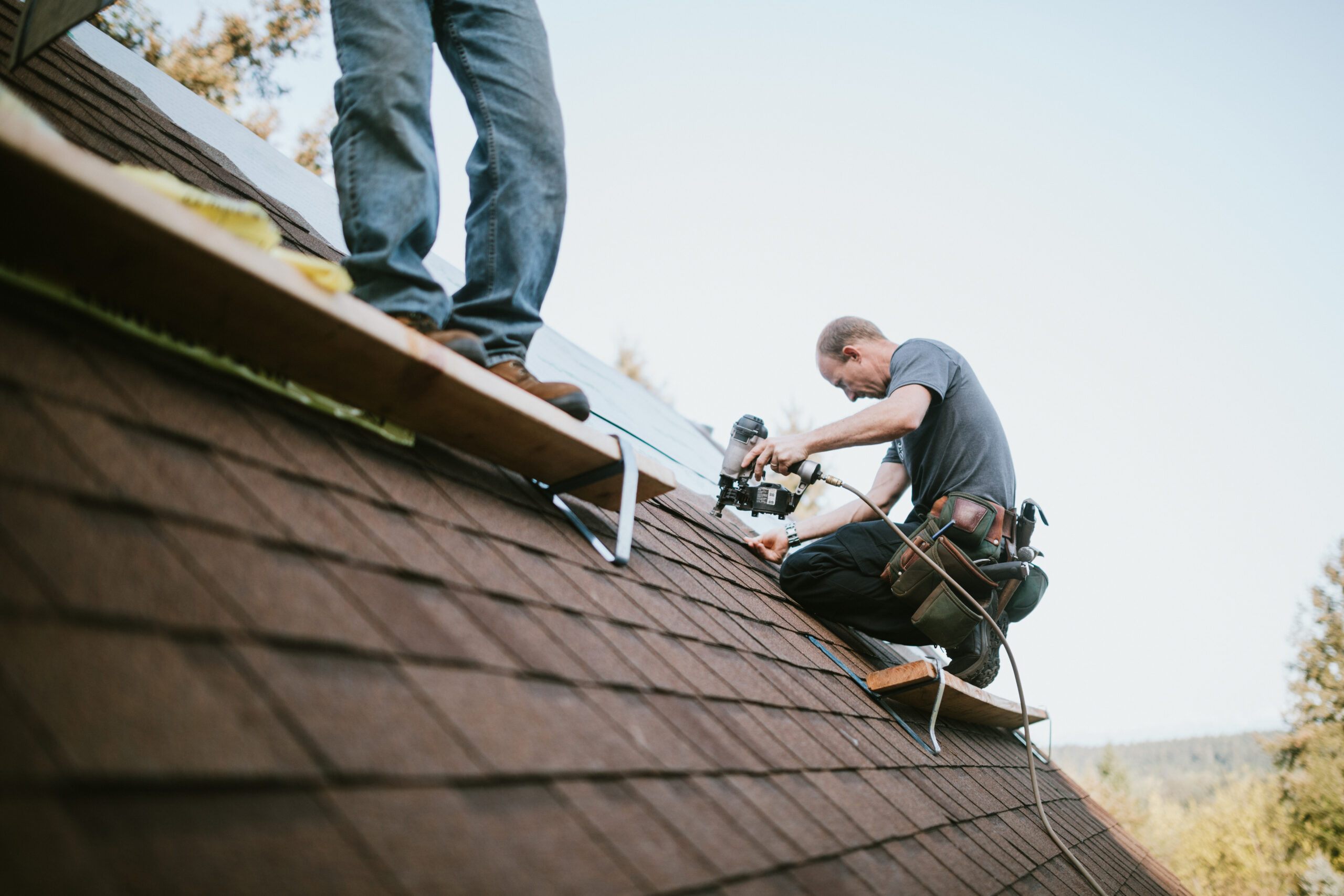- Home
- Services
Residential Services
Commercial Services
Additional Services
- Areas We Serve
- Financing
- Resources
- About us
- Contact Us
Setting the Standard in AZ Roofing Since 1993
Your roof’s shingles are designed to keep water out, but once moisture gets trapped underneath, the real damage begins where you can’t see it. Beneath those asphalt shingles lies your roof decking, a crucial layer that supports the entire structure. When moisture seeps into that layer, it can silently weaken your roof from the inside out.

In Arizona cities like Phoenix and Tucson, the problem is often underestimated. Many homeowners assume dry desert air prevents water-related issues, but that isn’t true. Monsoon rains, roof leaks, condensation, and even poor attic ventilation can trap moisture under the shingles. Over time, this trapped moisture rots the decking, weakens fasteners, and leads to expensive structural repairs. Understanding how moisture behaves and what warning signs to watch for can help protect your roof before the damage spreads.
Moisture finds its way beneath shingles through several small openings or weak points in the roofing system. Damaged flashing, cracked sealant, or misaligned shingles can allow rainwater to sneak in. Even minor roof leaks that dry quickly on the surface can still let moisture linger beneath the shingles.
In Arizona’s hot climate, temperature swings between day and night can cause vapor condensation under roofing materials. That moisture doesn’t always evaporate, it gets trapped between the shingle and roof decking, creating a perfect breeding ground for rot and mold. Poor attic ventilation makes the problem worse by allowing warm, humid air to accumulate, turning the underside of the decking into a moisture trap.
Most roof decking issues start small but worsen quickly once moisture gets in. You might not see obvious leaks right away, but there are telltale signs homeowners can spot early:
Ignoring these symptoms allows damage to spread across wider sections of the roof, turning what could have been a small fix into a major project.
Once moisture penetrates roof decking, the damage multiplies quickly. The wooden sheathing begins to absorb water, leading to swelling and delamination. As the material softens, shingles start to lift, exposing more gaps for additional moisture intrusion.
This chain reaction eventually weakens the entire roof structure. Nails rust, underlayment deteriorates, and insulation loses effectiveness. In severe cases, mold growth can spread into the attic, posing health risks to the household. For homes in Phoenix and Tucson, where monsoon storms hit hard and fast, moisture damage can escalate from a small patch of rot to widespread failure within a single season.
Proper ventilation is one of the best defenses against moisture buildup. Without enough airflow, heat and humidity linger under the roof, creating condensation on the decking surface. Over time, this constant moisture exposure breaks down even the strongest materials.
A balanced ventilation system includes intake vents (usually at the soffits) and exhaust vents (at the ridge). This setup allows air to circulate freely, drying out trapped moisture before it can cause damage. Insulation also plays a role. Inadequate insulation allows warm, moist indoor air to rise into the attic, where it condenses against the cooler roof surface. Keeping both systems in balance helps prevent moisture-related deterioration and extends your roof’s lifespan.
Once moisture damage is detected, acting quickly prevents more costly repairs. The first step is a detailed inspection by a qualified roofing contractor. They’ll check for soft spots, mold, and delaminated decking. Damaged sections need to be replaced before installing new shingles or underlayment.
At Lyons Roofing, we use high-quality decking materials and ensure the underlayment is properly sealed to prevent future moisture intrusion. We also address ventilation problems to stop recurring condensation. By combining solid materials with expert installation, your roof can resist Arizona’s demanding weather and stay dry from the inside out.
Routine maintenance is the easiest way to avoid moisture-related decking damage. Scheduling professional inspections once or twice a year allows roofers to identify small leaks, nail pops, or damaged shingles before they lead to trapped moisture.
During maintenance visits, professionals clean debris, reseal flashing, and verify attic airflow. Even minor tasks like clearing gutters can make a major difference, since backed-up water along the edges of the roof can seep beneath shingles and soak the decking.
For Arizona homeowners, scheduling inspections before and after the monsoon season is especially important. This ensures your roof stays strong and moisture-free all year long.
Homeowners across Phoenix, Tucson, and surrounding areas deal with unique challenges caused by heat, humidity shifts, and monsoon storms. Lyons Roofing helps prevent and repair issues like:
We focus on diagnosing problems early and delivering long-term fixes to protect both your roof and your home’s structure.
How can I tell if my roof decking is damaged by moisture?
You might notice sagging areas, musty attic smells, or water stains on ceilings. A professional inspection confirms the extent of damage.
Can trapped moisture dry out on its own?
Not usually. Once moisture becomes trapped beneath shingles or decking, it stays sealed in and continues to cause rot until addressed.
What causes moisture buildup in Arizona homes?
Even in dry climates, condensation, roof leaks, and poor ventilation create humidity that becomes trapped beneath shingles and decking.
How often should I check for moisture issues?
Schedule roof inspections twice a year, ideally before and after monsoon season, to detect any moisture or leak-related damage early.
Will replacing shingles fix moisture damage under the decking?
Only if the decking itself remains solid. If the wood is soft or rotted, it must be replaced before installing new shingles.
Prevent hidden moisture from weakening your roof. Call Lyons Roofing at (520) 442-1121 for expert roof inspection and repair in Phoenix and Tucson, AZ.